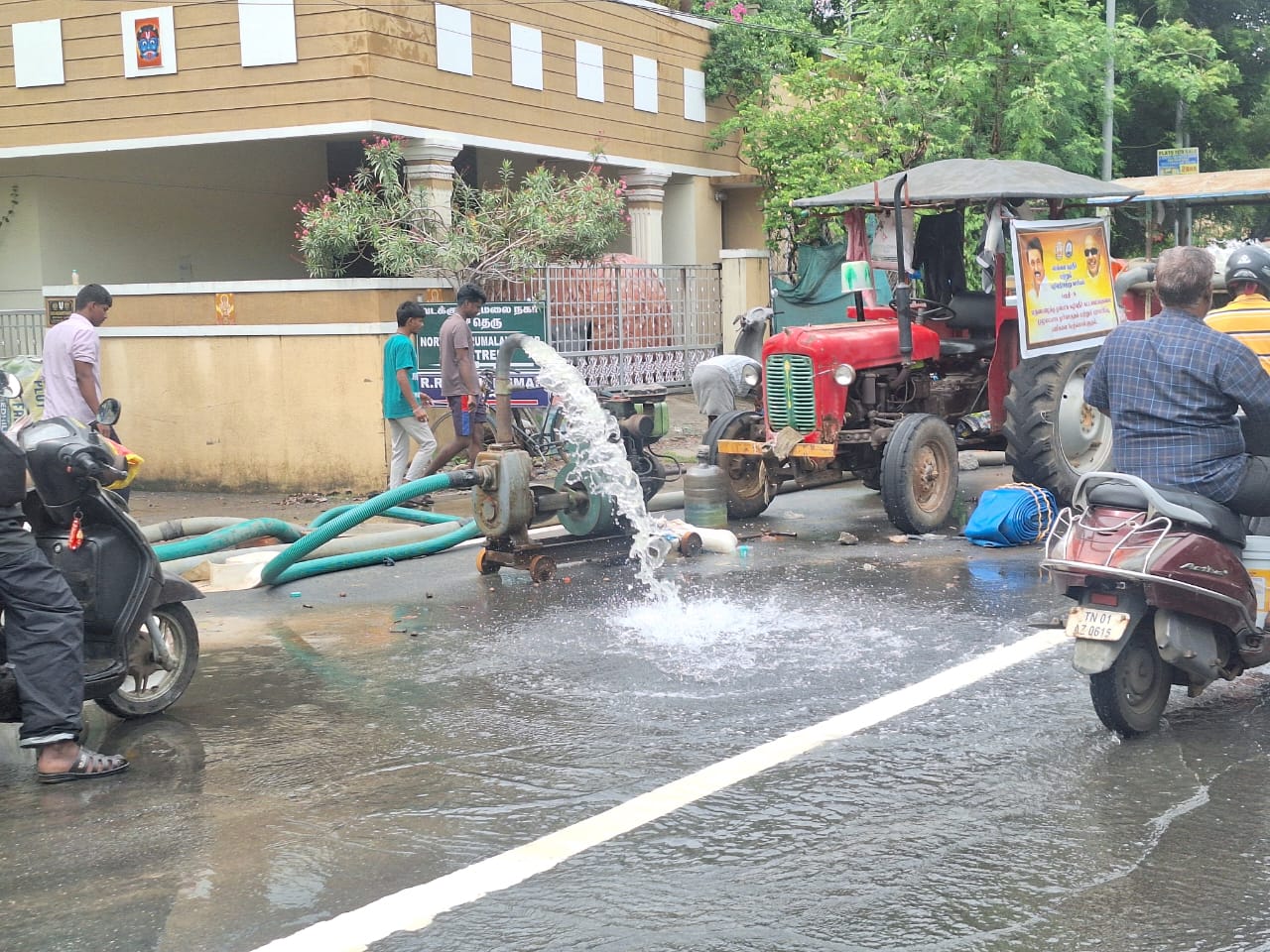Though Chennai received heavy rains this year too, Tamil Nadu government's proactive measures seem to have reduced impact on life and livelihoods in affected areas.
Published Oct 18, 2024 | 11:04 AM ⚊ Updated Oct 18, 2024 | 11:42 AM

Proactive measures spared Chennai from monsoon woes.
Even though heavy rains lashed Chennai on Tuesday, 15 October, the city did not suffer as much as it did the previous year, thanks to the precautionary measures taken by the Tamil Nadu government.
Heavily populated areas in north Chennai like Pattalam and Choolaimedu were submerged in knee-deep waters on 15 and 16 October. However, the next day, the floodwaters were efficiently drained by powerful motors but the aftermath left behind muck and an unpleasant odour. Despite the stench, residents were seen drying rain-soaked mats and clothes as the skies cleared.
IMD had predicted heavy rain and thunderstorms in Chennai and several parts of Tamil Nadu from 14 to 17 October. This was due to the onset of the northeast monsoon and a low pressure area that had formed over the Bay of Bengal.
As predicted, heavy rains were recorded across Chennai on 14 October. New Manali Town received 23.01 cm, Kathivakkam 21.24 cm, Perambur 21.18 cm, and Kolathur 21.12 cm.
Flooding affected tunnels, subways and over 540 location, prompting the Greater Chennai Corporation (GCC) and other departments to mobilise resources to clear debris and drain stagnated water. A total of 1,223 motor pumps were deployed to remove water from 501 sites.
The Tamil Nadu government and the GCC have said that it is the result of the works to prevent the effects of monsoon rains.
The GCC completed digging 33 canals over a stretch of 53.42 km. It also cleared 765 km of the 3,040 km total stormwater drainage system by 10 September. In addition, the ongoing second phase includes drilling 1,156 km of drainage.
The rehabilitation of 196 water bodies, establishment of 141 sponge parks and 11 water storage and pumping systems were also part of the effort to mitigate rainwater flooding.
As the monsoon began, the Tamil Nadu government assigned 15 IAS officers and six District Revenue Officers to oversee precautionary measures in Chennai. Additionally, 21,000 GCC employees were deployed across 15 zones around the clock.
Likewise, 2,149 employees from the Tamil Nadu Water Supply and Drainage Board and over 5,000 personnel from the Tamil Nadu Electricity Board were also deployed. A fleet of 162 high-speed sewage suction vehicles and 524 jet-trading vehicles were utilised to clear blockages in the drainage system.
Expressing a sense of relief, Srinivasan, a shop owner at Pattalam told South First, “I have been living in this area for 45 years. This year, the rains were less than last year. Last year, bags of rice got soaked in water. The refrigerator and weighing machine broke down. This time, I managed to secure everything without any damage.”
Ezhilmani, a resident of Pattalam, acknowledged that while rainwater did stagnate, quick response from municipal officials, following a visit from the chief minister, helped minimise the damage.
“Just like last year, rain water stagnated. But this year, since the chief minister came to inspect on the first day of rain, the municipal officials also worked actively to drain the rain water. Therefore, this year, the rains did not affect us as much”.
Senbagam, who has been living in Vyasarpadi for four years, said, “It’s just me and my mother. I don’t have children. I’ve been suffering due to floods for the past four years. This year, the floodwater was less than last year. We have only a refrigerator and TV. We secured those, clothes, rice and groceries. I am currently looking for another house.”
Chennai recorded 74.3 mm of rainfall in the month of October during the northeast monsoon in 2023. However, this time around, IMD reported 91.0 mm of rain between 1 and 17 October.
Chief Minister MK Stalin attributed the reduced impact of this year’s rains to the government’s proactive measures, a sentiment echoed by residents who noted the lower levels of damage compared to previous years.
The worse, however, is far from owner. Residents of localities prone to flooding are now dreading the rains expected in December. They only hope that more measures are put in place by December to brace the heavy downpour and the miseries it is expected to bring on.
(Edited by Neena)
